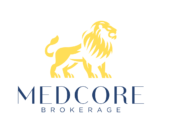PPO, HMO, EPO, and POS Plans: What Health Plan Type Is Best for Your Employees?
- May 16, 2025
- Posted by: admin
- Category: Health Maintenance Organization

Choosing the right health insurance for your employees is a big deal for any employer. With healthcare costs going up by 6-8% every year (KFF 2023), you’ll want to think carefully about what your employees need and what works for your business when looking at.
This guide breaks down PPO, HMO, EPO, and POS Plans, gives real-life examples, cost comparisons, and tips from the pros to help you choose the best option.
What is the Structure’s Health Insurance Plan
There are three key things to look at before looking at the specific plan:
- Provider Networks: Under this plan, doctors and hospitals are available.
- Cost Structures: Premiums, deductibles, copays, and coinsurance
- Care Coordination: Referral requirements and gatekeeping systems
Complete Analysis of PPO, HMO, EPO, and POS Plans
1. Preferred Provider Organization (PPO)
PPO’s plan is known to offer the best flexibility, but at a higher cost. According to UnitedHealthcare, about 47% of employer-sponsored plans are PPOs.
Key Features
- Network Size: The network size of PPOs is 200-300% larger than HMOs.
- Average Premiums: The average premiums are between $650-$850/month for family coverage.
- Common Deductibles: And common deductible is $1,500-$3,000 for individuals.
For Example
One of the tech startups in Austin with employees who often travel nationwide chose a PPO.
Although their premiums were 22% greater than those of an HMO, they achieved annual savings of $47,000 in out-of-network emergency care expenses.
2. Health Maintenance Organization (HMO)
HMOs focus on keeping people healthy and keeping costs down. Numbers from the American Hospital Association show that healthcare costs with HMOs are 25-35% cheaper than with PPOs.
Key Features
- Network Size: Usually limited to specific geographic regions
- Average Premiums: $450-$650/month for family coverage
- Preventive Care: 100% covered in most plans
With Example
A manufacturing company in Houston, with most of its workers living nearby, saved $128,000 a year by switching from a PPO to an HMO. Plus, they kept employees happy by adding better wellness programs.
3. Exclusive Provider Organization (EPO)
Exclusive Provider Organizations (EPOs) are like a mix of HMOs and PPOs; they take a little from both. And guess what? They’re getting way more popular!
According to the Society for Human Resource Management (SHRM), since 2020, about 18% more people are choosing EPOs every year.
Key Features
- Network Rules: Strict in-network requirements with no exceptions
- Average Premiums: $550-$750/month for family coverage
- Specialist Access: No referrals required
For Example
A Dallas finance company cut its healthcare costs by 15% without limiting doctor choices by switching to a special EPO plan with access to 35 top-rated medical centers.

4. Point of Service (POS)
Checkout systems (POS) are getting way more advanced, new ones even have telemedicine and can switch between different networks.
Key Features
- Hybrid Structure: HMO-style coordination with PPO-style options
- Average Premiums: $500-$700/month for family coverage
- Out-of-Network: Typically covers 60-70% of costs after deductible
With Example
A school district in San Antonio saw a 12% boost in keeping its staff after rolling out a POS plan. This gave teachers the option to see doctors nearby or big-name specialists for ongoing health problems.
5 Critical Decision Factors
1. Employee Healthcare Utilization Patterns
Look through past insurance claims to figure out:
- How often do people see specialists
- How much do they use the ER
- What’s needed to handle long-term health issues
2. Geographic Considerations
The availability of good healthcare networks depends on where you are. Companies in cities usually have plenty of choices, but if you’re in a rural area, you might want to think about:
Does your plan cover virtual doctor visits?
Will it help pay for travel if you need to see a specialist?
Which nearby hospitals are included in the network?
3. Cost-Benefit Analysis
| Plan Type | Avg. Employer Cost/Employee/Month | Avg. Employee Out-of-Pocket |
|---|---|---|
| PPO | $780 | $2,300 |
| HMO | $620 | $1,750 |
| EPO | $690 | $1,950 |
| POS | $650 | $2,050 |
4. Workforce Demographics
Different age groups have different needs.
- Younger employees: People often go for cheaper plans (like HMO/EPO) to save money.
- Families: You’ll usually need bigger networks (like PPO/POS).
- Older Workers: May need to handle long-term health issues.

5. Strategic Business Goals
Match your health plan to:
- Hiring and keeping great employees
- Wellness programs at work
- Your budget and long-term money goals
Emerging Trends in Plan Design
The health insurance industry is changing thanks to some cool new ideas.
1. Tiered Networks
Ways to group doctors and hospitals by how good and affordable they are, so you pay less when you choose the best ones.
2. Hybrid Models
Mixing HMO primary care with PPO specialists, often with bonus savings to sweeten the deal.
3. Value-Based Insurance Design (VBID)
Adjusting costs based on how helpful a treatment is makes important care cheaper and discourages unnecessary treatments.
How Medcore Brokerage Delivers Superior Solutions
As the leading employee benefits consultant in Texas, Medcore Brokerage employs a proven, structured four-phase methodology to deliver optimal benefits solutions:
- Needs Assessment– Conduct a thorough analysis of workforce demographics and claims history to identify key requirements.
- Market Scan– Evaluate offerings from 25+ carriers to secure optimal network alignment and cost efficiency.
- Plan Design– Develop customized benefit structures, cost-sharing models, and integrated wellness programs.
- Implementation Support– Provide comprehensive employee education, HR tools, and ongoing compliance management.
Our clients achieve measurable results, including 12–18% cost savings and a 22–35% increase in employee satisfaction.
Partner with Medcore Brokerage to optimize your benefits strategy with data-driven solutions.
Expert Editorial Comment
Choosing the right health insurance plan extends beyond financial considerations; it is a strategic investment in your workforce.
By understanding the distinct features of PPO, HMO, EPO, and POS plans and aligning them with your organizational goals and employee needs, you can deliver comprehensive coverage while optimizing costs.
Whether your priority is improving employee retention, reducing expenses, or expanding provider access, this guide equips you with the insights needed to make an informed, data-driven decision.
Partnering with an expert advisor like Medcore Brokerage can further streamline the process, enabling you to offer competitive employee benefits that drive long-term business success.
Frequently Asked Questions
1. How do I know if my employees will accept an HMO?
Conduct an anonymous survey assessing:
- Current provider relationships
- Willingness to change doctors
- Preferences for cost vs. choice

2. Can we offer multiple plan types?
Yes, many employers provide:
- A primary HMO or EPO with a buy-up PPO option
- Different plans by employee class (e.g., hourly vs. salaried)
- Regional variations for multi-location businesses
3. What’s the best way to compare plan costs?
Use Total Cost of Ownership (TCO) analysis, including:
- Premium contributions
- Expected claims costs
- Administrative expenses
- Tax implications
4. How often should we reevaluate our plan?
We recommend:
- Annual review of utilization and costs
- Full market evaluation every 3 years
- Immediate review if employee complaints spike or costs increase by>15%
5. Why choose Medcore Brokerage over other consultants?
We differentiate through:
- Texas-specific market expertise
- Proprietary cost-modeling tools
- Carrier-agnostic recommendations
- Ongoing compliance support

